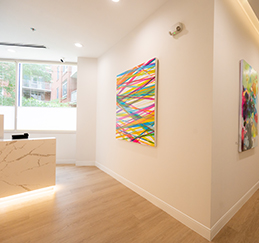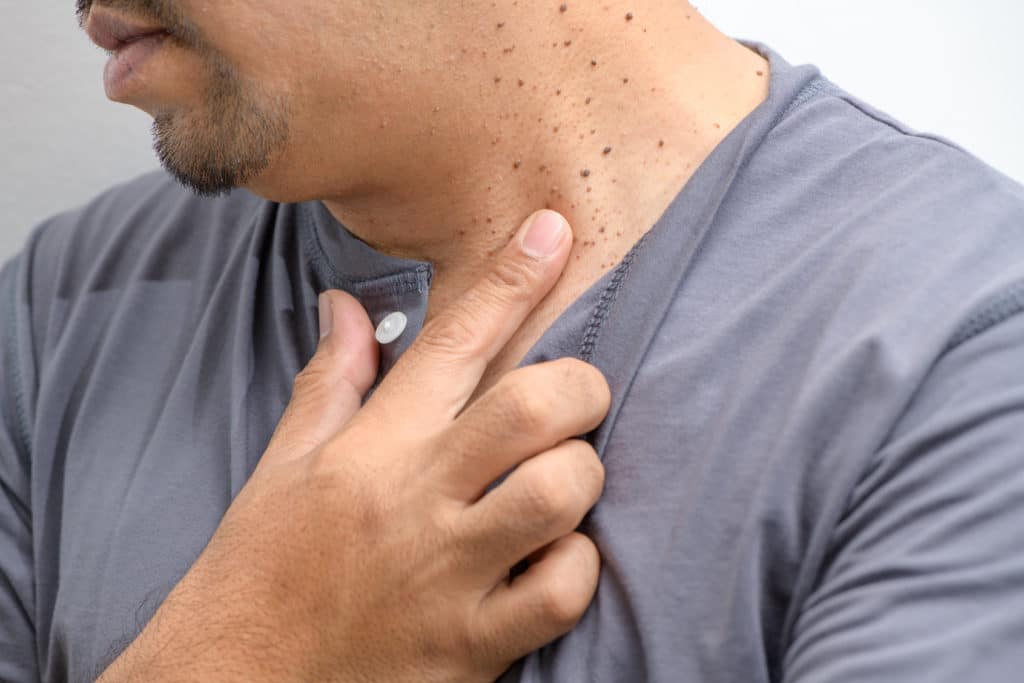As people grow older, they may notice scaly, dark bumps on their skin that may itch when they come in contact with clothing. These spots are common lesions called seborrheic keratoses and while they are benign, they can certainly look concerning at times, especially if you have not experienced them before.
What Are Seborrheic Keratoses?
Seborrheic keratoses are common overgrows of skin that appears as either tan, black, or brown scaly spots on the skin that can range in size from a few millimeters to even a few centimeters in size. As you get older and your skin ages, they can increase both in number and size. The vast majority of these skin lesions are asymptomatic, but occasionally these lesions can cause pain, itch, or even bleeding.
What Are the Causes?
No one is certain about the exact cause of seborrheic keratoses, but dermatologists have noticed certain associations with these lesions as listed below:
- Most cases have occurred in adults over age 50 and it is rare for children to have seborrheic keratoses. This could be due to changes in hormonal activity or just another part of the aging process.
- Genetics almost certainly plays a significant role. Individuals with seborrheic keratoses tend to have other family members with these skin lesions as well.
- Increased sunlight exposure may lead to a greater number of seborrheic keratoses in certain people.
- Women who are pregnant or are undergoing estrogen replacement therapy sometimes develop seborrheic keratoses, and thus an imbalance of certain sex hormones such as estrogen may be related to the growths.
Are Seborrheic Keratoses a Cause of Alarm?
The good news is seborrheic keratoses are benign and not cancerous. They also are not infectious or contagious. However, these lesions can be cosmetically bothersome and occasionally can be painful, itchy, or may even bleed. It is best to contact a dermatologist if these symptoms interfere with your daily routine or comfort. Additionally, these lesions can often be alarming in their appearance and can occasionally be difficult to differentiate from a concerning mole. If this is true, you should seek an evaluation with a dermatologist to ensure that the lesion is not concerning for your overall health.
Is it Possible to Prevent Seborrheic Keratoses?
Unfortunately, there is no known way to prevent seborrheic keratoses. These typically are considered inevitable skin lesions that appear with age, but there are still certain treatment options to treat those lesions that do appear on your skin.
What Treatments Are Available?
Several treatments for seborrheic keratoses are available and your dermatologist will examine your lesions to determine the best treatment options. Although these treatments may permanently remove the treated lesions, it is important to note that other seborrheic keratoses may still appear in other areas of the body. There are typically three treatment methods that can be used to remove these lesions:
- Shaving: a surgical scalpel is used to remove the lesion after the skin is numbed
- Cryotherapy: liquid nitrogen freezes the lesion and it eventually falls off
- Electrocautery: seborrheic keratoses are burned off
Schedule a Consultation
While seborrheic keratoses are benign, their appearance can occasionally be concerning for other more dangerous types of skin lesions. Furthermore, they can be bothersome in their appearance or even painful or itchy. If you find yourself encountering one or more of these lesions on your skin, please schedule a consultation at Arlington Dermatology and let our expert team develop the best treatment plan for your seborrheic keratoses.



